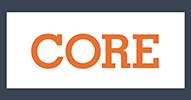Lately, it seems that sugar, high fructose corn syrup, and other variants of sweeteners are all over the news. Sugar addiction can be blamed for a host of ailments and most doctors will tell you that no matter what your situation – you should cut your sugar intake. But what does sugar addiction actually look like? How do you know if you have been affected?
If any of the statements below sound familiar – You might be living your life in slavery to sugar.
- Are you hungry two hours after eating a meal?
- Do you feel like a failure because you cannot seem to pass up sweet snacks?
- Are you sleepy in the afternoon each day and need a snack to get you going?
- Are you tired of being seduced by the sweetness of sugar and high fructose sweeteners?
If you answered yes to these questions – You are not alone!
The USDA recommends a very liberal sugar consumption of 10 teaspoons per day, yet most Americans eat about 30 teaspoons per day or over 100 pounds per year.
Skip to the bottom for the sugar solution or read on to learn more about how we got to this sad state.
Still with me? Great!
It might be fitting that we are often times, especially in America slaves to sugar, because it was sugar that drove the early slave trade. Early explorers loved the sugar cane that they found in America so much, they began to process it and ship it back to the homelands of Europe. When it was introduced in France they called it crack and sold it as a controlled substance. As we see here, the French seem to be more enlightened on sugar and eating habits in general.
It turns out that sugar is actually as addictive as cocaine! Even worse, high fructose corn syrup (used extensively as a more affordable sugar substitute) is actually four times more addictive than cocaine or sugar.
According to IIN founder, Joshua Rosenthal “Today, sugar is found in many of the usual suspects, like cakes, cookies, and candy. But you will also find it in canned vegetables, baby food, cereals, peanut butter, bread, and tomato sauce. It is often disguised in fancy language, labeled as corn syrup, dextrose, maltose, glucose, or fructose. Even some so-called healthy foods contain sugar. A lemon poppy seed Clif Bar has 21 grams of sugar or 5 teaspoons. Compare that to a chocolate-glazed cake donut from Dunkin’ Donuts, which has 14 grams of sugar, or 3 teaspoons. You may think your afternoon cup of coffee only has a little sugar, but a 16-ounce Starbucks Frappuccino actually contains 44 grams of sugar, or 10 teaspoons—that’s like eating three donuts! Overconsumption of refined sweets and added sugars found in everyday foods has led to an explosion of hypoglycemia and type 2 diabetes.”
Some variants of sugar, high fructose corn syrup, or another sweetener substitute can be found in almost every processed food found in your local grocery store. Even things like roasted peanuts or simple bread that should be “safe” contain sweeteners. Wow! No wonder this habit is so hard to break!
But know this: You do not need to remain a slave to sugar!
Ok – you are probably saying that it’s all well and good to talk about quitting the sugar habit – but it’s easier said than done. Fair enough – I’ve had my own battles with sugar and lived to tell the tale (though I was not always sure I’d reach the other side!).
Take the first step
You will need to change your food consumption patterns slightly, and combine other foods with sugar intake so that you eliminate cravings. We believe that it is time for people to take leadership of their food intake one meal at a time. But changing your diet when every product around you contains sweeteners of some sort can be very difficult. It may seem at times that there is nothing safe to eat. And when you are hungry and confused about what to eat – is exactly when you are most vulnerable to making poor eating decisions and derailing your progress.
Image Credits: Shutterstock
GET STARTED WITH FREDERICK GEIGER – ON-CORE VENTURES
If you are like me – you need someone to bounce ideas off of – I am happy to give you time to do just that.
The best way to see if we are a good fit is in a free complimentary discovery session.
